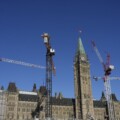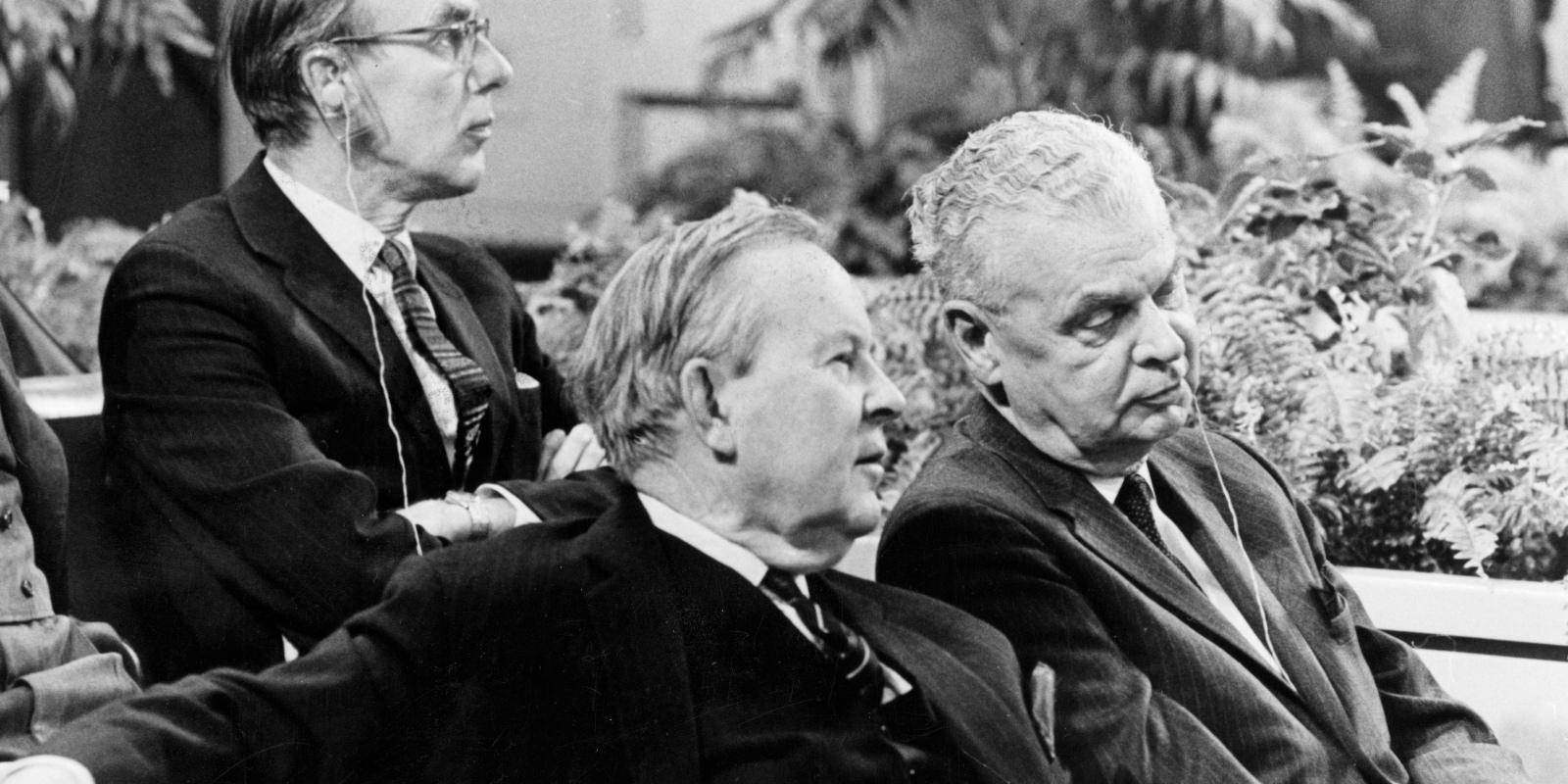This episode of Hub Dialogues features John Ibbitson, Globe & Mail columnist and best-selling author, about his new must-read book, The Duel: Diefenbaker, Pearson and the Making of Modern Canada.
You can listen to this episode of Hub Dialogues on Acast, Amazon, Apple, Google, and Spotify. The episodes are generously supported by The Ira Gluskin And Maxine Granovsky Gluskin Charitable Foundation and The Linda Frum & Howard Sokolowski Charitable Foundation.

SEAN SPEER: Welcome to Hub Dialogues. I’m your host, Sean Speer, editor-at-large at The Hub. I’m honoured to be joined today by John Ibbitson, a longtime Globe and Mail columnist and bestselling author, about his must-read new book, The Duel: Diefenbaker, Pearson, and the Making of Modern Canada. I’m grateful to speak with him about the book, including the story of continuity and tension between Canada’s 13th and 14th prime ministers and how it came to shape modern Canada.
I should say that I’m generally thrilled to have John on the podcast. He’s a thinker and writer who I’ve long admired, and someone who’s been kind and supportive of me as a writer and public commentator. John, thanks for joining us at Hub Dialogues, and congratulations on the book.
JOHN IBBITSON: Well, thank you, Sean. It’s good to be here.
SEAN SPEER: I thought we’d organize our conversation a bit chronologically. I’m going to put some questions to you about Diefenbaker and then Pearson, and then we’ll bring them together as the book so effectively does. You argue that “John Diefenbaker has been unfairly treated by history.” Let me ask a two-part question. First, what has history gotten wrong about him? And second, what do you attribute the unfairness to?
JOHN IBBITSON: Those are two very large questions. I don’t know about your high school, but mine contained Renegade in Power, Peter C. Newman’s history of the Diefenbaker governments, written shortly after Diefenbaker’s defeat. It’s a beautifully written book, but it’s also a savage indictment. And I think it became the conventional wisdom, that conventional wisdom being that Diefenbaker was a man whose inner demons, his paranoia, his indecisiveness essentially contaminated his governments, made it impossible for anything to get done. They eventually disintegrated into chaos. His own cabinet rebelled against him. The Americans were up in arms against him, and he, having won the greatest majority government in history up until then, subsequently, was led to defeat and to a very diminished appreciation of his role in Canadian history. The narrative then being picked up by Lester Pearson, Mike Pearson, everybody called him, who then did all sorts of wonderful things.
Over the years, as you and I do, researching different topics and issues, I kept coming across stuff that contradicted that: reforms to immigration that happened on Diefenbaker’s watch; reforms to health care that happened on Diefenbaker’s watch; human rights legislation, Diefenbaker’s watch; and justice legislation, Diefenbaker’s watch. And it became apparent to me that whatever demons Diefenbaker did struggle with as an individual, his government got a lot done, and that a proper telling of the story of Canadian history between the wars would be one that talked about reforms that were implemented or that were initiated by Diefenbaker and implemented by Pearson. Indeed, in some cases, initiated by St. Laurent, moved forward by Diefenbaker, and then advanced by Pearson, that there was indeed a continuity of progress through those years, and that was underappreciated.
As to why he was underappreciated, I think I’ve said before that there is a bit of a—you’ll forgive me using the word—a Laurentian bias in our history writing, a kind of a progressive assumption that makes it difficult for conservative politicians to get a fair hearing. From the days that I covered Mike Harris in the 1990s through Stephen Harper to now it just seems to me that the conservatives who have led our country and our provinces need to be given a fair understanding of their contribution.
SEAN SPEER: I want to ask about Diefenbaker’s character formation and the development of his worldview. You write that one of the gifts from his father was “a whiggish view of history.” What do you mean, John? And how did it influence his worldview in politics?
JOHN IBBITSON: Yeah. Diefenbaker, like his father and like most people of his generation, he was born in the last years of the 19th century, believed that a great and beneficent British Empire had spread civilization around the world, that this was a world of continuing progress and enlightenment, and so long as the sun shone on that empire all would be well with the world. The cataclysms of the first and second World War and the move towards independence, and the general dismantlement of the British Empire in the 1950s did not—at a fundamental level—change that worldview. He continued both to believe in the progress of humanity, which, by the way, I think overall is a good thing. But he also remained more tied to the British Empire and to its traditions than probably he should have. The country was moving on after the Second World War, and the United States was replacing Great Britain as the preeminent power. And it’s not something that Diefenbaker ever really was able to reconcile himself to.
SEAN SPEER: You argue that Diefenbaker was the country’s first populist prime minister. I have an image of the mid-century Conservative Party as quite stodgy and even elitist, at least in some quarters. It’s, of course, true that he didn’t have a lot of caucus support when he first became party leader. John, talk about Diefenbaker’s populism and how it interacted with the centre of gravity within his cabinet and broader caucus.
JOHN IBBITSON: Yes, indeed, he’s the only populist prime minister that we’ve had in this country’s history. It was a populism rooted in experience. Diefenbaker was the son of a teacher, and a rather impoverished one at that. And then, when he was eight, the family moved to Saskatchewan and homesteaded. He was poor on that homestead. He was resentful of the toffs and the swells who paraded around looking down their noses at people with funny German last names like his. That resentment at its best led to a crusading zeal which manifested itself, for example, in his many years as a lawyer, defending people who otherwise would’ve had no proper legal defence.
His populism was rooted in that experience. It is the populism of a man who grew up poor. It was of a man who sat in cells while mothers sobbed and explained why their child had died and why she had buried it, or why she felt she had to kill her husband if she was going to save herself. It was a populism rooted in his own experience with the little guy because he was himself a little guy who had risen to the top. I think, as I argue in the book, that this was something that the “common people” always recognized in Diefenbaker and admired in him. They never lost that admiration through the thick and thin of his political career.
SEAN SPEER: The book describes Diefenbaker as something of a realignment figure in terms of the intellectual and geographical centre of gravity in Canadian Conservative politics. You make the case, for instance, that he oriented the party in a more Western direction. Talk about his influence on conservative politics, including its Western shift and its long-run consequences.
JOHN IBBITSON: Yeah, Diefenbaker inherited a Conservative party that was based on two assumptions. It served the interests of Bay Street, and it lost elections. It lost them over and over and over again. It had been losing elections pretty much nonstop throughout his life, with the exception of Bennett in 1930, which only lasted one term. Diefenbaker believed that the party had to broaden its base, that it had to speak to ordinary individuals, not just to the toffs on Bay Street and James Street. He believed that there was a connection between the farmers and pioneers of the West, amongst whom he had grown up, and the party as well. And indeed, he was the person who realigned that party.
When John Diefenbaker was growing up in Saskatchewan, he liked to joke that the only thing saving Conservatives were the game laws. And by the time he left, the Conservative Party was now anchored in the prairie provinces. And there its arguably been anchored in the prairie provinces ever since that time. So he was responsible in part for that realignment.
SEAN SPEER: You mentioned in an earlier answer, John, that as you look deeper into the Diefenbaker government’s policy record, there were more accomplishments than is the conventional wisdom. But you also observe that his government starts to lose focus and coherence and begins to evolve into the type of infighting and paranoia and that tends to be associated with Diefenbaker’s time as prime minister. Talk a bit about what happened. How did the wheels start to fall off for the Prime Minister Diefenbaker?
JOHN IBBITSON: It’s important to remember that Diefenbaker came to the leadership and to the prime ministership late in life. He had fought and lost numerous elections before he finally was elected to the House of Commons in 1940. Once he got into the party and into the caucus, it became quickly clear that he was an outlier inside that caucus. There were MPs who admired him and respected him, but the leadership of the party wanted nothing to do with him. He was from the West; they were from the centre, and he was a populist, and they were elitist. It was only through a strange confluence of events—the pipeline debate, which rattled the confidence in the Liberal government—the sudden taking ill of George Drew, the Conservative leader—the need to pick another leader quickly and there was no one really available at the time who was willing to take it on or able to take it on, and the depth of popularity that Diefenbaker had within actually the grassroots of the party, if not the elite, that made it possible for him to become leader in 1956 and then to shock everyone except himself by becoming prime minister in 1957.
So he didn’t have time to learn how you lead a party. He was not by nature a trusting man, and he didn’t learn to build trust. He had trouble taking honest criticism. That said from ’57 until about ’61, he gave us good government. And as I said in the book, if the Diefenbaker government ended in ’61, he would’ve had a pretty glowing review. It was only in 1962 when he got himself embroiled in the attempt to fire the governor of the Bank of Canada, James Coyne, and got himself into a huge fight with the Kennedy administration over nuclear weapons, that his lack of experience and his inability to trust, and, frankly, his growing paranoia, caused him to make a series of bad decisions that ended up defeating him and leading to the defeat of his government. That, again, is what we tend to remember in history. But if you looked back from ’57, ’58, ’59, ’60, ’61, up until then, things are going pretty well.
SEAN SPEER: Talk, John, about Diefenbaker’s conception of the National Policy and the notion of the frontier as a key part of his worldview and understanding of Canada.
JOHN IBBITSON: Yeah, because he was centred in the West and because he tended to be visionary, at least in his rhetoric, he had a recognition for the far North that had alluded previous politicians. Remember, he grew up around Indigenous Canadians, Métis Canadians. He grew up in communities where people went North to hunt, to fish. So he had ties to the North that other politicians up until then had not had, at least at the national level. And it made it possible for him to envision what he called the new frontier, the development of the North for its resources. Now, it has to be said, this was a North in which there was scant recognition for the presence of the Indigenous people, who’d already been there for a very long time. This was very much a road to resources vision of the North, opening up the North and developing its great wealth. In the late 1950s, early 1960s, it would not have occurred to Diefenbaker, even though he was the prime minister who granted the franchise to First Nations, to have thought more about the rights and needs of people in the territories. But it was a vision for the North that he put forward and that, in fact, captured the imagination of the nation and started—well, for one thing, he started a highway that Stephen Harper finished some 50 years later.
SEAN SPEER: Let’s turn now to Pearson. I was reminded in reading the book that he spent some time as a history professor with a focus on British and constitutional history. How did his academic and intellectual work ultimately influence his politics?
JOHN IBBITSON: Not to contradict the question, but I wouldn’t say that his academic and intellectual works influence his politics all that much. Look, he was a smart guy, and he was a tremendous jock. He excelled at all sorts of sports, and he was making a greater contribution to the University of Toronto sports teams than he was to the University of Toronto’s history department. But what impressed people about Mike Pearson—what impressed them when he went to Oxford, what impressed them at University of Toronto—was his ability to work with others. He was this kind of people that people liked. He was the kind of person that people liked. He was the kind of person that people trusted. He was the kind of person who could bridge divides and create a consensus. People were recognizing that in him when he was a very young man.
And as [unintelligible] began putting together the first true Department of External Affairs, the first true foreign office for Canada, he noticed a young academic at UofT, was impressed with his intelligence and impressed as well with his collegiality and indeed asked him to sit for the Foreign Service exams, which, by the way, Pearson came first place. So I don’t think it was so much how Pearson viewed the Constitution in Canada or the world of the British Empire in Canadian history as it was his own intelligence and affability which drew him to the attention of powerful people and would continue to draw him the attention of powerful people for the rest of his career.
SEAN SPEER: Perhaps it was the bow tie, but I had an image of Pearson as an earnest, teetotalling intellectual who wasn’t a natural fit for politics. You observed, though, that by the time he got to Ottawa, he did drink, and he liked to gossip and some of the other aspects of political life, even though he hated campaigning. If Pearson wasn’t Brian Mulrooney or even Jean Chrétien, he also wasn’t quite Stéphane Dion either. How should we view Pearson as a political figure?
JOHN IBBITSON: We should view him as a highly successful mandarin. Remember, this was a fellow who was essentially the deputy minister of foreign affairs, who then became the minister of foreign affairs, who then became the leader of the Liberal Party, who then became prime minister. So it’s a strange journey that he took, and he always maintained that he got into politics more or less by accident. At that point in our country’s history, the marriage of the federal public service and the Liberal Party of Canada was so complete that it was hard to know where one stopped and the other began. And again, that was married in his career. He was also, once he became prime minister, a very good and effective person at orienting policy in the right direction, convincing premiers to adopt the Canada Pension Plan, working to get the point system in place for immigration.
He was passionately committed to a flag for Canada and saw that through, despite the tense opposition, and all of those things, rightly, contribute to his reputation as a fine prime minister. And he was also a good and decent man, but he was not, as you mentioned, a very good politician. There was a bit of a lisp there. The bow ties offended a lot of people, even back then, they made him seem stuffy and, as you say, intellectual. He couldn’t campaign well. He managed to lose the election of 1962, which everybody thought he was going to win. He managed to be reduced to minority government in 1963, when people thought the majority government was likely, and he managed to repeat that minority government in ’65 when everyone thought that the majority government was an absolute certainty. It was Pearson’s ability to almost lose elections that defined his prime ministership as much as it was also his ability to advance policy.
SEAN SPEER: The book outlines some fascinating insights into Pearson’s own worldview and political ideas. You write that he sought to move the Liberal Party to the Left, and in the aftermath of the 1960 Kingston Conference, he, of course, oversaw the creation of key parts of the modern welfare state. Yet you also note that he thought Pierre Trudeau’s subsequent foreign policy was too squishy. What a way to make of Pearson’s politics? How should we situate him in the long-run ideological trends within the Liberal Party?
JOHN IBBITSON: I would say, first of all, it’s not just within the Liberal Party; there was tremendous consensus in the wake of the Second World War through the 1940s and 1950s and first half of the 1960s. There wasn’t a lot of divide between Republicans and Democrats in the United States. There wasn’t a great divide between Labour and Conservatives and Great Britain, and there wasn’t a great divide between Progressive Conservatives and Liberals in Canada. So the tradition that both Pearson and Diefenbaker embraced was one, first of all, a winning side. The Allies who had won the Second World War, who had then won the peace by creating, in essence, the suburban middle class, through the G.I. Bill, through loans and supports for housing and education for veterans who had overseen huge works, the St. Lawrence Seaway, for example, the system of National Highways, the system of airports that were all built in these years. And also the creation of the welfare state, the pension plans, immigration reform, welfare, education reform. All of these programs, federal and provincial, were launched in the 1950s and ’60s and, in many ways, inherited by Pierre Trudeau when he became prime minister in 1968. And that’s one of the core arguments of the book: that there is policy continuity between Diefenbaker and Pearson, although traditionally Pearson gets all the credit.
SEAN SPEER: I previously asked you, John, to situate Diefenbaker within his cabinet and broader caucus. Let me do the same with Pearson, and before I do, I’ll set it up this way. In reading the book, I was reminded of the extraordinary depth of the Pearson era cabinets and including, of course, the inclusion into federal politics of Pierre Trudeau in 1965. So talk a bit about Pearson as the head of cabinet and cabinet governance during his time as prime minister.
JOHN IBBITSON: I would say that Pearson and Diefenbaker were both very similar in that they presided over an era of cabinet government. This was an era that had been launched by Louis St. Laurent, in which the prime minister was seen as essentially chairman of the board being cabinet. So powerful and able cabinet ministers could achieve significant reforms and significant advances, and did on both their watch. And both Pearson and Diefenbaker would’ve said, “I’m here to guide the cabinet and to provide direction, but in the end, this is cabinet government.” The difference is that Diefenbaker’s, as I said, paranoia made it difficult for him to trust his cabinet. And indeed, he became suspicious of cabinet ministers that were too successful. Ellen Fairclough, for example, achieved major reforms in immigration when she was the first cabinet minister, who was a woman, and as immigration minister, Mr. Diefenbaker, he demoted her for that.
Pearson had none of that personal animus. He was very happy whenever one of his ministers achieved success. Also, though he had the ability to surround himself with very highly competent advisors. Tom Kent was as important a person as any minister in the Pearson government. It’s also true, though, that Diefenbaker and Pearson both had trouble managing their cabinets. There were tensions between the Quebec ministers and the English-Canadian ministers in Pearson’s cabinet. And at times, that cabinet almost collapsed. The difference between Diefenbaker and Pearson is only that in the last extreme moments, Pearson was able to use the skills as a diplomat, the skills that had won him the Nobel Prize, to hold cabinet together for a few more months until he retired. And Diefenbaker was not able to hold his cabinet together, but they both faced strong and powerful cabinets, and they both faced cabinet rebellions.
SEAN SPEER: I was reminded in reading the book, John, that the narrative that the Pearson government’s principal accomplishments were around the further development of the modern welfare state could have been possibly substituted with a story of an economic nationalist agenda had Walter Gordon’s vision ultimately found durability within the government itself and the broader public. Talk a bit about economic nationalism and the role that it played in the Pearson era.
JOHN IBBITSON: It’s interesting that, in a way, Walter Gordon and Diefenbaker had more in common with each other than Walter Gordon had with his own prime minister. Gordon was the finance minister who put forward a budget. It was the worst day in the Pearson government’s history, not long after they came to power that would have essentially reshored a good chunk of Canadian industry that was being turned into branch plans of the American colossus. The Americans were so upset, and the Canadian business class was so upset that the budget was essentially scuppered, and also scuppered the friendship between Walter Gordon and Mike Pearson. But David Baker was also looking for ways in which to diversify trade. His answer, which, by the way, was quite a flawed one, was to increase trade with the British Empire and the British Commonwealth. And the reason it was a good idea was—in fact, it was the seed of our modern trade policy, in which we have tried to diversify trade agreements in the Pacific and in Europe with some success under both Conservative and Liberal governments.
Diefenbaker was trying to form a trade area within the Commonwealth. And the reason that was a bad idea was simply the Great Britain wanted nothing to do with it. Britain was trying to get itself into what is now the European Union. And Diefenbaker was correct, by the way, in telling the British that they would fail in their effort to get into the European Union, and they did at that point. But it meant that Diefenbaker was selling an idea of a trading block within the Commonwealth that Britain itself had no desire to be a part of. So it failed. But in the end, what Diefenbaker was doing in a way was what Walter Gordon was doing. They were both trying to find a way to avoid having the Canadian economy swallowed up by the United States.
SEAN SPEER: You write that the single biggest difference between Diefenbaker and Pearson was their “ability to grow”. The former couldn’t evolve in his views, but the latter could. How did Pearson’s own politics and his conception of politics evolve over this period?
JOHN IBBITSON: In two ways. First of all, because he had been ambassador to the United States, Pearson recognized that the world after 1945 was an American world, that Washington was the new Rome, and that Canada was going to have to accommodate itself within that reality. And indeed, Pearson was one of the—not the only, but one of—the architects of the North Atlantic Treaty Organization. This was the time in which Canada was joining organizations and indeed helping to create organizations. It was seen as an important middle power within the Western alliance. That is sometimes difficult for us to remember now, but that’s how we were seen then. And so, Pearson was able to reorient Canada away from that British imperial perspective into one that recognized that this was a new West that was oriented towards Washington. And the second thing that he was able to recognize was that, within that reorientation, Canada needed to have a clear understanding of itself, of what it was. That meant understanding what was happening in Quebec because the Quiet Revolution was underway; it meant reforming the Liberal party itself, which was pretty corrupt in the province of Quebec.
And in fact, bringing Trudeau and Pelletier Marshall into cabinet was a way of reforming the Quebec wing of the party, but also meant dealing with rising Quebec nationalism. And for Pearson, it meant above all the symbol of a flag, which he championed month after month after month in the face of deep hostility led by Diefenbaker, who didn’t understand any of these things and was deeply resentful of the flag. And on that debate, we see where Pearson understood where Canada was going in a way that Diefenbaker did not. The University of Toronto constitutional and British history professor had indeed evolved into someone far more modern with a far more subtle understanding of what Canada was becoming.
SEAN SPEER: Let’s turn now to the book’s insights about the interrelationship between the two prime ministers. You write that even though they came from different backgrounds and had different experiences, they both came to personify the growth of the country in the 20th century. How can we understand the modern history of Canada itself through Diefenbaker and Pearson?
JOHN IBBITSON: And indeed, the book tries to, in fact, create that arc of history through the lives of two men. They were both born in small-town Ontario. Diefenbaker was the son of a teacher. Pearson was the son of a minister. They were both itinerant: teachers and ministers moved around a lot. They were living in a province of a dominion that was not yet a country. Britain had complete control over Canadian foreign policy. Canada was at that point trying to define literally its boundaries and its role—the role of the federal government, the role of the provincial government. It was creating provinces. It was not sovereign. When the First World War was declared, Canada was automatically at war because it was part of the British Empire. But both of those men served but did not fight in the First World War. And Canada was a different country coming out of the war than it was coming in.
And then again, Diefenbaker and Pearson rose in their perspective professions. Diefenbaker, as a lawyer in the Prairies, Pearson, as a diplomat within external affairs, as Canada began to assert itself as a North American, Northern power, and a sovereign state, and a member of alliances with its own particular destiny. And as you say and as the book says, as we watch Diefenbaker and Pearson’s career progress, we’re watching them progress within a Canada that is itself changing its own definition of itself. And in the end, the two of them, who were born under the reign of Queen Victoria in small town, semi-colonial Ontario, fought over whether Canada should accept nuclear weapons onto its soil. That’s how much the world had changed. That’s how much Canada had changed, and how much they had changed.
SEAN SPEER: I want to ask you about your key insight concerning the continuity between Diefenbaker and Pearson. You write that “Pearson gave coherence to Diefenbaker’s piecemeal reforms”. Why don’t you unpack that idea here, John?
JOHN IBBITSON: I had mentioned that Ellen Fairclough transformed the immigration department. Up until then, the purpose of the immigration department in the federal government was to keep Canada white, to prevent—Fairclough went in and fought for years to clean out that department, and then finally rose in the House of Commons. I believe it was January 1962 and announced the new order in council, which said that your race, your religion, the colour of your skin, none of these will any longer be a factor in whether you are admitted to this country. This was the beginning of multiculturalism. This was the beginning of Canada’s truly race-blind immigration. It was a great achievement by Fairclough, but still, this was an order in council. And you still had people inside the department who could make sure that applications from London were processed much faster than applications from Delhi.
So Pearson took those reforms, and actually, with the help of Tom, it was Tom Kent’s idea, created the point system where there’s just a form and you have to fill it out. And if you’ve got English, you get so many points. If you’ve got education, you’ve got so many points. If you have the job skills that we need, you get so many points. You match the threshold, you’re in. In some ways, it’s one of the greatest inventions in Canadian history. So immigration reform is something that started out under Diefenbaker and was pushed forward by Pearson. Diefenbaker took an idea the St. Laurent government had created but not ever acted on, which was universal public hospital care. It was one of his first acts as prime minister, to announce and implement universal public hospital care.
Tommy Douglas in Saskatchewan took the money and implemented instead universal public health care, period. Diefenbaker didn’t have a mandate for anything that ambitious, but he created a World Commission. And the World Commission was chaired by his good friend, Emmett Hall, who is also from Saskatchewan. The two guys had known each other since they were in law school, and they all—Emmett Hall, Tommy Douglas, John Diefenbaker—were all of the same ilk, of the same worldview. And everyone knew what Hall was going to recommend, and he did recommend it. And then Mr. Pearson, who was now prime minister, gave us Medicare.
SEAN SPEER: Let me put a penultimate question to you. There’s a lot of talk these days about political polarization and the contentiousness of contemporary politics. John, give listeners a flavour of this era. What was Diefenbaker and Pearson’s personal relationship like? Did they like or respect each other? And what about the divide between the major parties that we talked about a bit earlier?
JOHN IBBITSON: They couldn’t stand each other. They liked each other fine when Pearson was minister of external affairs and Diefenbaker was external affairs critic, but inevitably Diefenbaker became Conservative leader and Pearson became Liberal leader. And then something happened that had never happened before. They fought each other for a decade. They fought each other from 1958 to 1968 through a number of elections, a couple of which Diefenbaker won and a couple of which Pearson won, but Diefenbaker didn’t leave. So even in 1968, they were still, or at least at the end of ’67, they were still at war with each other, and the country was getting mighty sick of it. And part of that Trudeau mania that we had in 1968 was a whole country going, “Oh, thank God, these old men are gone, and we can turn to something new.”
But there was a lot of scandals. There was a lot of acrimony. Pearson really hated Diefenbaker. I don’t think Diefenbaker hated Pearson any more than he hated everybody by that point in his life, except his wife. But Pearson came to loathe Diefenbaker because Diefenbaker humiliated him in the House of Commons over and over and over again. Again, Diefenbaker was a great parliamentarian, and Pearson wasn’t. So when we get into the scandals of the book—the Munsinger scandal and things like that—Diefenbaker just made Pearson’s life hell. But they were fighting over things like scandals. Again, apart from the flag, the two parties weren’t at war with each other over monetary policy or fiscal policy, over education, or health care. Broadly speaking, Progressive Conservatives were in the same boat as Liberals.
If Robert Stanfield had won the election in 1968 instead of Trudeau, we probably would’ve had government not that dissimilar to the government that we had under Trudeau. Duller perhaps, but in the same general vein. I knew already, but I truly was impressed with how effectively it is possible to govern when there is a broad social consensus. We live in a time now where that social consensus is under stress, but whatever else happened, Diefenbaker and Pearson were able to achieve much because everybody, including their cabinets, including the university departments, including the editorial boards of the newspapers, was pretty much of the same mind about what should be done.
SEAN SPEER: Last question: As I mentioned to you before we started recording, this book is extraordinarily well-researched. What did you learn about Diefenbaker or Pearson, or the era that surprised you the most?
JOHN IBBITSON: I’m not going to give it away, but I was very surprised by the extent to which they each had the same experience in the First World War. I’ll just leave it at that. I didn’t know anything about John Diefenbaker’s first wife, didn’t even know he had a first wife, until I started working on the book. There was one thing that absolutely surprised me where I went: “Oh my God.” It was that the St. Laurent Cabinet voted just before the 1957 election to terminate the Avro Arrow program because they recognized that the plane was already obsolete. But they decided not to announce that decision until after the election because they knew it would be unpopular. Of course, they lost the election. So John Diefenbaker inherited the decision to cancel the Avro Arrow project, which he did. He’s been blamed for that to this day. But it was the right decision. It was the right decision when St. Laurent was prime minister, and it was the right decision when he was prime minister.
SEAN SPEER: Well, those are just some of the fascinating insights that one will find in The Duel: Diefenbaker, Pearson, and the Making of Modern Canada. John Ibbitson, thank you so much for joining us at Hub Dialogues.
JOHN IBBITSON: Sean, this has been great fun. Thank you.
Recommended for You
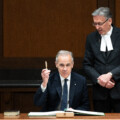
The Notebook by Theo Argitis: Carney’s One Big Beautiful Tax Cut, and fresh budget lessons from the U.K.

Christopher Snook: Is Canada sleepwalking into dystopia?
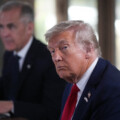
Rudyard Griffiths and Sean Speer: The fiscal hangover from the One Big Beautiful Bill hits Canada
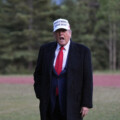
‘A fiscal headache for Mark Carney’: The Roundtable on how Trump’s One Big Beautiful Bill could affect Canada
